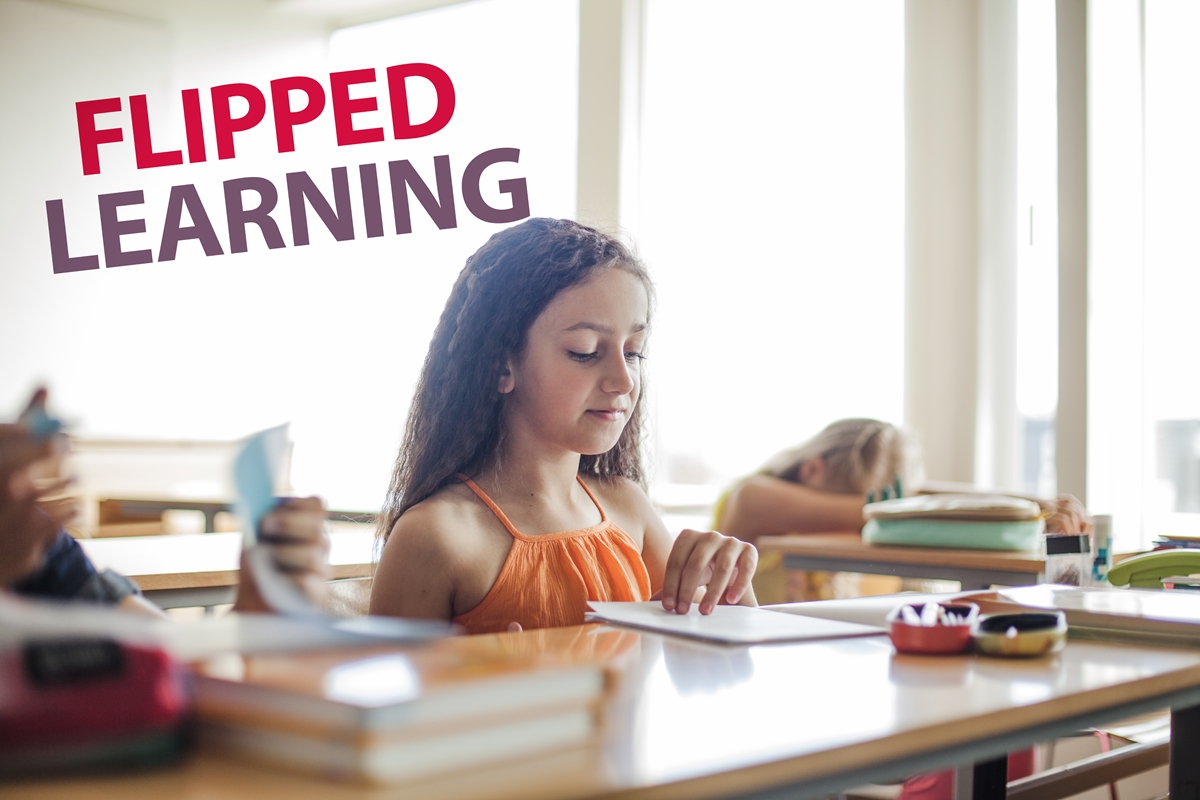When we look at all the assumptions that have been overturned in education because of the pandemic and all the needs that have only grown during this time, what becomes clear is that the frameworks that previously worked for education are no longer guaranteed to function. Something new is needed, and flipped learning may be exactly the right model for where education is headed once the pandemic is over.
What is flipped learning? A common and oversimplified answer is that it is an approach that asks students to watch videos at home before class so that class time can be used for more interactive activities.
But the best way to describe it is to contrast it with traditional teaching frameworks. In the traditional framework, students get first contact with new concepts in class (the "group space") and then higher-level interactions are all on the student side through homework and so on (in the "individual space"). Flipped learning puts first contact with new ideas before group space activities, then uses the group space for active learning on mid- and upper-level tasks.
It's worthwhile to compare flipped and traditional frameworks by contrasting the assumptions that each framework makes:
- Traditional frameworks assume that we operate in a scarcity model of information; flipped learning assumes that information is abundant and (mostly) freely available.
- Traditional frameworks assume that technology is scarce, or somehow bad for learning; flipped learning, by virtue of the flexible environment it espouses, views technology as a tool that should be embraced.
- Traditional frameworks assume that students arrive at class as blank slates with no prior knowledge of the new concepts to be learned; flipped learning assumes that students come to their studies with ideas, perhaps flawed in many ways, but which nonetheless are raw materials for learning that students bring to the table.
- Perhaps most significantly, traditional frameworks assume that students have no capacity for self-regulation or self-teaching, and in fact that it's inappropriate to ask students to do either. Flipped learning not only believes in the ability of students to self-teach and self-regulate, it leans into that ability and is predicated upon that ability. But it also never assumes that students have honed that ability or even practiced it much; that's why teaching students to self-teach and self-regulate is a feature, not a bug, of the framework.
Now think about the seismic changes that the pandemic has brought. Education had many assumptions of its own prior to the pandemic, and several of them have been utterly wrecked by it:
- We can no longer assume that we have virtually unlimited access to colocation. In other words, we used to take meeting regularly in person in a classroom completely for granted; we'll never be able to do that again, even once the pandemic is over.
- We can no longer assume that we can assess students through traditional timed testing any time we want. This may be a corollary to the loss of colocation plus the rise of technology, but it seems clear that the pandemic dealt a death blow to the entire concept of timed testing. This may only be tangentially related to flipped learning, but it's significant.
- Finally, all four of the pedagogical assumptions of traditional frameworks are now out of the window. We can no longer assume that we can keep technology at arms' length, that students have empty heads, or that students can't teach themselves things. All four of those have been utterly inverted–or flipped–since last year.
At the same time that all these things changed, many aspects of teaching and learning before the pandemic have stayed the same, and their need has become more acute and more apparent. We see now more clearly than ever that learning requires connections between people and ideas. We see that a growth mindset is critical for learning and well-being. We definitely see that the need to be able to teach oneself new things and regulate one's own learning is more important than ever. And we see that the need to guide student growth in self-teaching and self-regulation, painfully lacking in pre-pandemic teaching, is now at a premium.
That’s why it’s the perfect time to more fully adopt flipped learning in teaching. It fits all the emerging assumptions and fulfills all the overarching needs, and steers clear of all the prior models that are now on their way out.
Because make no mistake: Once the pandemic continues to ease, and we begin to start making our way back to the physical classroom, the worst thing we could do is try to get "back to normal".
What a tragic mistake it would be to exit this horrific time in history by wasting the opportunity to get rid ourselves of outdated models – and all their associated injustices, inequities, and inefficiencies – and put on something better for our students.
In this moment in history, we have the opportunity to reshape education into something better for everyone, and we can honor the sacrifices we’ve had to make during the pandemic by choosing to do better. We can begin with our frameworks, and flipped learning is a good place to start.
